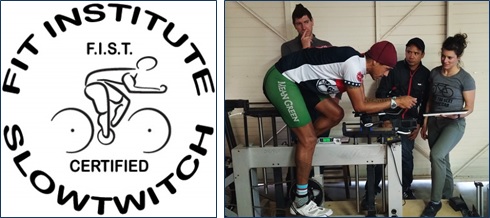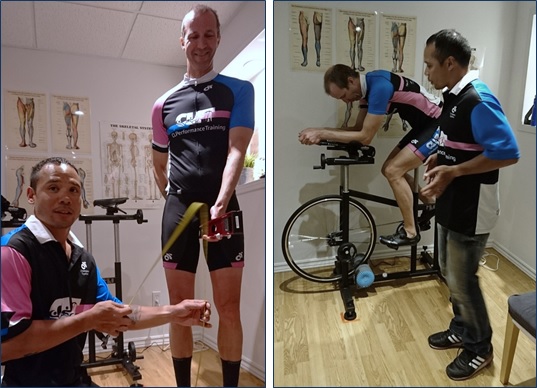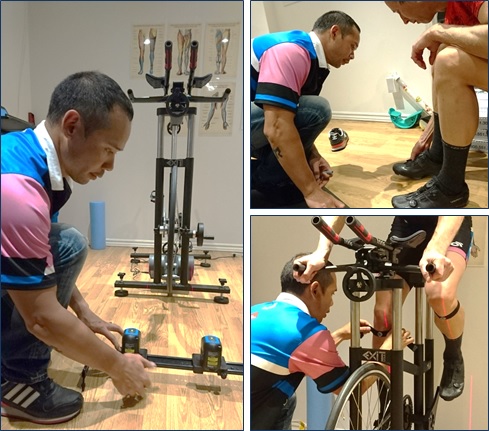For information on bike packing, assembly and equipment rental, click here.
For pricing on bike fitting services, click here.
Coach Al Caballero is certified as a Dynamic Bike Fit Technician by the Fit Institute Slow Twitch (FIST).
Fit Institute SlowTwitch (FIST) was created by Dan Empfield, owner of the SlowTwitch Forums and inventor of Quintana Roo bikes and wetsuits.

Becoming F.I.S.T. certified is an intensive, five-day program that takes technicians through every aspect of road and tri bike fitting in a workshop setting.
A Dynamic Bike Fit is done using the rider’s own saddle on a special fit bike, which enables the fitter to make adjustments without stopping the rider to make mechanical changes to the bike itself. The rider’s immediate feedback results in discovering the optimal balance and range of comfort, power and aerodynamics for various bike styles and race distances.


An initial position based on the estimated saddle height is used as a starting point on the fit bike. The fit session starts with initial fit coordinates, and from there adjustments are made at various seat angles, which are called ‘Trials’. The rider compares the feel of each Trial against the previous one. (Think of getting an eye exam, and toggling back and forth between lens settings to compare which is best.)
The fitter progresses through a series of adjustments to move the rider’s position closer to optimal comfort and body angle ranges, and logs the coordinates of each Trial, until a the final “optimal” setting is reached.
Each Trial is captured on video and digital angle measuring devices capture the body angles associated with each trial. These fit coordinates are turned into a set of complete bike solutions or a ‘prescription’. The rider now has a precise set of coordinates that will guide their purchase of a custom bike build, purchase of a new bike, or retrofit of their existing bike.

Added Benefit: If the optimal position cannot be replicated on the rider’s existing bike, the coordinates from any of the several Trials to find the best adaptation.
Pedal and cleat fitting improves comfort, bio mechanics and power output, while preventing injuries in the foot, knee and hip. Small changes can balance pressure on the ball of the foot, and lessen or eliminate hot spots and numbing. A misalignment of the cleat will send a chain reaction of imbalance between the foot, to another almost fixed contact point, the saddle.
